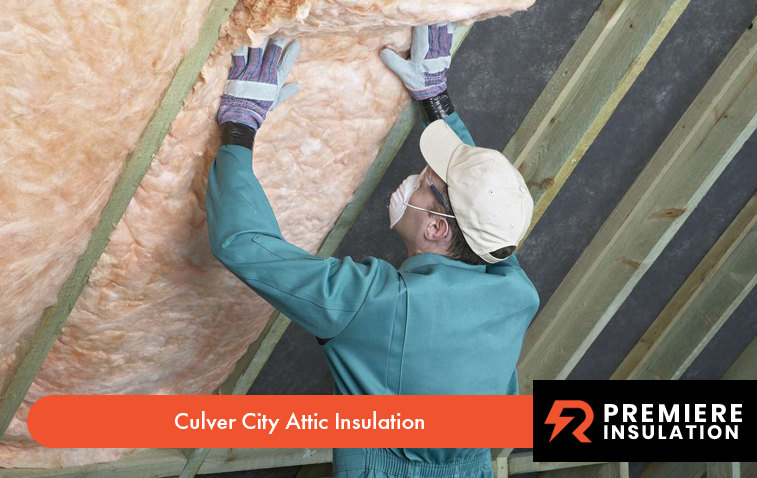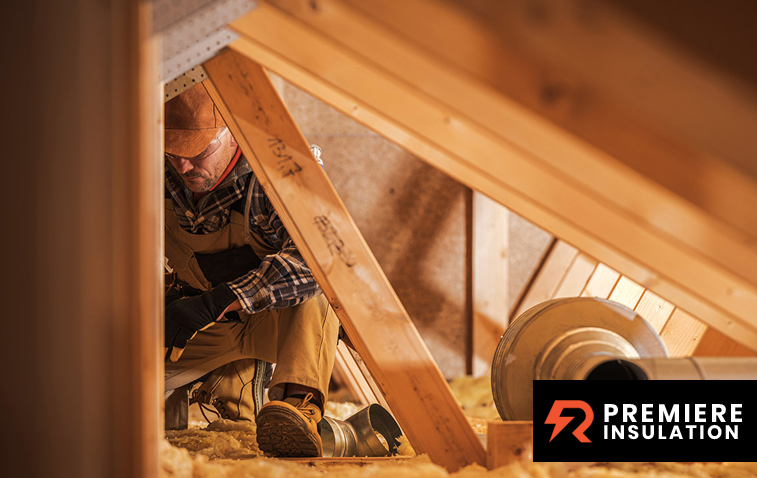Understanding R-Values: The Key to Effective Attic Insulation
When insulating your attic, understanding R-values is essential. This measure, indicating the resistance to heat flow, fundamentally affects the insulation’s effectiveness. High R-values signify superior insulation, thus enhancing your home’s energy efficiency. Equipped with this knowledge, you can select the most suitable insulation for your attic, optimizing comfort and cost-effectiveness.
Understanding R-values is essential to effective attic insulation. R-values measure a material’s thermal resistance and affect your home’s energy efficiency. Common insulation materials like fiberglass, cellulose, spray foam, and rigid foam have R-values ranging from 2.2 to 6.5 per inch.
For effective Culver City attic insulation, choose materials with appropriate R-values.

What are R-Values?
R-values, or resistance values, measure an insulation material’s ability to resist heat flow. They are calculated based on the thickness, density, and type of material, with higher values indicating greater insulating effectiveness. This evaluation helps homeowners and insulation professionals determine the best materials for optimal thermal resistance in various applications.
A high R-value is crucial for insulation, enhancing its effectiveness in preventing heat transfer. This helps maintain a consistent indoor temperature and improves energy efficiency. It is essential in extreme weather conditions, where maintaining a comfortable indoor environment requires significant energy. Therefore, understanding and selecting insulation with the proper R-value can lead to cost savings and improved comfort.
Determining the Right R-Value for Your Attic
Selecting the right R-value for your attic insulation enhances your home’s energy efficiency. Premiere Insulation helps homeowners understand this concept and guides them in choosing the most effective insulation. With the proper R-value, you can maintain a comfortable indoor climate, reduce energy consumption, and save on energy costs.
Climate considerations
Climate is important in determining the appropriate R-value for your attic insulation. In regions with severe winters, like the northern parts of the US, a higher R-value is crucial to prevent heat loss from your home. Conversely, if you live in a hot climate like Culver City, a good R-value can keep your house cool by blocking the heat transfer from the scorching outdoor environment.
Understanding your local climate and its seasonal variations is crucial when selecting the appropriate R-value for your insulation. With tailored attic insulation, your home will maintain a comfortable temperature year-round, regardless of Culver City’s hot summers or mild winters.
Building codes and regulations
These R-values are based on Culver City’s Climate Zone 3 designation, which indicates a moderate climate with hot summers and mild winters. Proper attic insulation can significantly reduce energy costs and improve a building’s comfort. In addition to meeting R-value requirements, various building codes and regulations apply to Culver City attic insulation. These regulations specify insulation type, installation methods, and inspection requirements for new construction and renovation projects.
It is important to note that the building codes and regulations for attic insulation are subject to change. Therefore, it is always advisable to consult with the Culver City Building Department to determine the latest requirements before starting any insulation work.
Energy efficiency goals
Your energy efficiency goals also determine the appropriate R-value for your attic insulation. If you aim to significantly reduce your energy usage, opting for insulation with a higher R-value can be beneficial. Over time, this can lead to substantial savings on energy bills, contributing to both environmental sustainability and your financial well-being.
Common Insulation Materials and Their R-Values
When optimizing energy efficiency, selecting a suitable insulation material is essential. Here, we’ll delve into common insulation materials and their R-values, providing valuable insight for homeowners needing Culver City attic insulation.
Fiberglass
Fiberglass insulation is a popular choice for attic insulation due to its affordability and ease of installation. This material has an R-value ranging from 2.2 to 2.7 per inch, making it suitable for moderate climates. However, homeowners should note that fiberglass insulation may require a vapor barrier to prevent moisture issues.
Additionally, while fiberglass is generally safe, proper protection during installation is essential to avoid skin irritation or respiratory issues. Fiberglass offers a balanced combination of performance and value for homeowners seeking cost-effective and reliable attic insulation.
Cellulose
Cellulose insulation is an eco-friendly alternative typically made from recycled paper products. Its R-value ranges from 3.2 to 3.8 per inch, offering higher thermal resistance than fiberglass. Cellulose insulation can be installed using loose-fill or blown-in methods, making it versatile for various attic spaces. However, ensuring proper installation is crucial as cellulose insulation may settle over time due to its loose-fill nature. This settling can reduce insulation capabilities, leading to energy inefficiency and decreased thermal performance.
Spray foam
Spray foam insulation offers superior thermal resistance with an R-value ranging from 3.5 to 6.5 per inch, making it an excellent choice for maximizing energy efficiency. This type of insulation adheres to the surface, expanding to fill gaps and creating an effective air barrier. Despite the higher upfront cost, spray foam is a worthwhile investment for homeowners due to its long-term energy savings and superior performance. Given its impressive R-value and sealing capabilities, spray foam is a strong contender for effective Culver City attic insulation.
Rigid foam
Rigid foam insulation offers a high R-value per inch, making it an excellent choice for homeowners seeking superior thermal resistance. It is highly efficient in reducing heat transfer, thus contributing to a comfortable indoor climate in varied weather conditions. Though more expensive and complex to install than other options, it provides long-term savings due to reduced energy consumption. Investing in rigid foam attic insulation is wise for Culver City homeowners who are focused on premium performance and energy efficiency.

Improving Attic Insulation
Improving attic insulation involves more than just adding new material. It’s also crucial to consider upgrades to your existing insulation for enhanced efficiency. In Culver City attic insulation projects, homeowners often discover that older insulation materials must meet their current energy efficiency goals. Upgrading to a higher-quality insulation material, such as rigid or spray foam, can significantly improve the thermal performance of your attic.
Another critical aspect of improving attic insulation is identifying and sealing air leaks. Leaky spots in the attic, commonly found where utilities and ductwork penetrate, can undermine insulation effectiveness. Sealing these leaks ensures a more airtight space, improving energy efficiency and reducing energy bills. When taken together, these steps can significantly enhance the performance of your attic insulation in your Culver City home.
Ready to enhance the energy efficiency of your Culver City home? Call us at (310) 879-0880 to discuss your attic insulation needs today!
Conclusion
Properly selecting and installing attic insulation is critical to achieving energy efficiency in your Culver City home. Consider factors such as climate, building codes, and insulation material R-values to make an informed choice that suits your needs. To improve attic insulation, go beyond material selection. Upgrade existing insulation and seal air leaks. Ultimately, good attic insulation results in a comfortable home environment and significant energy savings.
